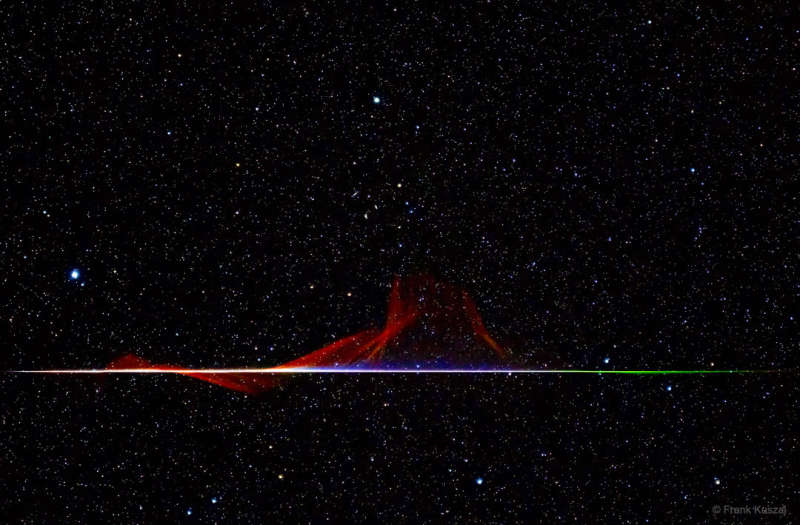Credit & Copyright: Frank Kuszaj
Explanation:
Meteors can be colorful.
While the human
eye usually cannot discern many colors, cameras often can.
Pictured is a
Quadrantids meteor
captured by camera over
Missouri,
USA,
early this month
that was not only impressively bright, but colorful.
The
radiant grit, likely cast off by asteroid
2003 EH1,
blazed a path across Earth's atmosphere.
Colors in meteors usually originate from ionized elements released as the
meteor disintegrates, with blue-green typically originating from
magnesium,
calcium
radiating violet, and
nickel glowing green.
Red, however, typically originates from energized
nitrogen and
oxygen in the Earth's atmosphere.
This bright
meteoric
fireball
was gone in a flash -- less than a second -- but it left a
wind-blown ionization trail that
remained visible for several minutes.
APOD is available via Facebook: in
English,
Catalan and
Portuguese
1999 2000 2001 2002 2003 2004 2005 2006 2007 2008 2009 2010 2011 2012 2013 2014 2015 2016 2017 2018 2019 2020 2021 2022 2023 2024 2025 |
Yanvar' Fevral' Mart Aprel' Mai Iyun' Iyul' Avgust Sentyabr' Oktyabr' Noyabr' Dekabr' |
NASA Web Site Statements, Warnings, and Disclaimers
NASA Official: Jay Norris. Specific rights apply.
A service of: LHEA at NASA / GSFC
& Michigan Tech. U.
|
Publikacii s klyuchevymi slovami:
meteor - Meteor - Kvadrantidy
Publikacii so slovami: meteor - Meteor - Kvadrantidy | |
Sm. takzhe:
Vse publikacii na tu zhe temu >> | |
